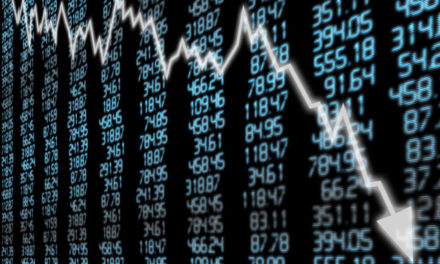Excluding Thursday’s dead cat bounce, October has been dreadful for the stock market and likely your 401(k) retirement fund.
The S&P 500 is the main measuring stick for U.S. stocks and it has slid more than 9 percent since Oct. 3. The Nadaq composite, home of many popular tech stocks, has dipped more than 11 percent.
Much of the slide can be attributed to rising interest rates scaring investors away, and there’s still a ways to go before we officially enter bear market territory.
But what does all of this market volatility mean those saving for retirement should do?
According to a recent article published on Humble Dollar and re-published by MarketWatch, you should assume low investment returns and sock away extra cash to compensate, as well as be ready to cut your spending for a year or two until things start to turn around should the market go against you.
Per MarketWatch:
U.S. stocks are greatly overvalued if you look at dividend yields, Tobin’s Q, cyclically adjusted price-earnings ratios and many other market yardsticks.
One exception: price-earnings (P/E) ratios based on trailing and forecasted earnings. According to markets.WSJ.com, the S&P 500 is trading at less than 23 times the past year’s reported earnings and at around 17 times expected operating earnings—expensive, but hardly outrageous. Those P/E ratios, however, may be misleading. Why? Corporate earnings have been pumped up by the long economic rebound. If the economy slows and those heady profits slip away, P/E ratios will look far less attractive.
But even if we dismiss today’s P/E ratios as misleading, and we agree that U.S. stocks are indeed overvalued, there’s still a fundamental problem: Valuations tell us nothing about short-run results and surprisingly little about long-run returns.
Consider a 2012 study by Vanguard Group. It analyzed how effective different market indicators—such as dividend yields, the Fed model and P/E ratios—were in explaining subsequent returns. The upshot: None had any success in predicting the market’s short-run results and most did a lousy job of forecasting 10-year after-inflation stock returns. Even the most effective measure, the cyclically adjusted price-earnings (CAPE) ratio, explained just over 40% of 10-year returns.
Moreover, even the much-lauded CAPE seems to have lost its mojo in recent decades, as another Vanguard study noted. The S&P 500’s CAPE ratio has been elevated for much of the past 30 years, and yet that hasn’t stopped the S&P 500 from clocking 10.6% a year, while inflation ran at 2.5%. The Vanguard study argues that today’s heady CAPE ratio looks somewhat less worrisome, once you factor in falling inflation and declining bond yields.



